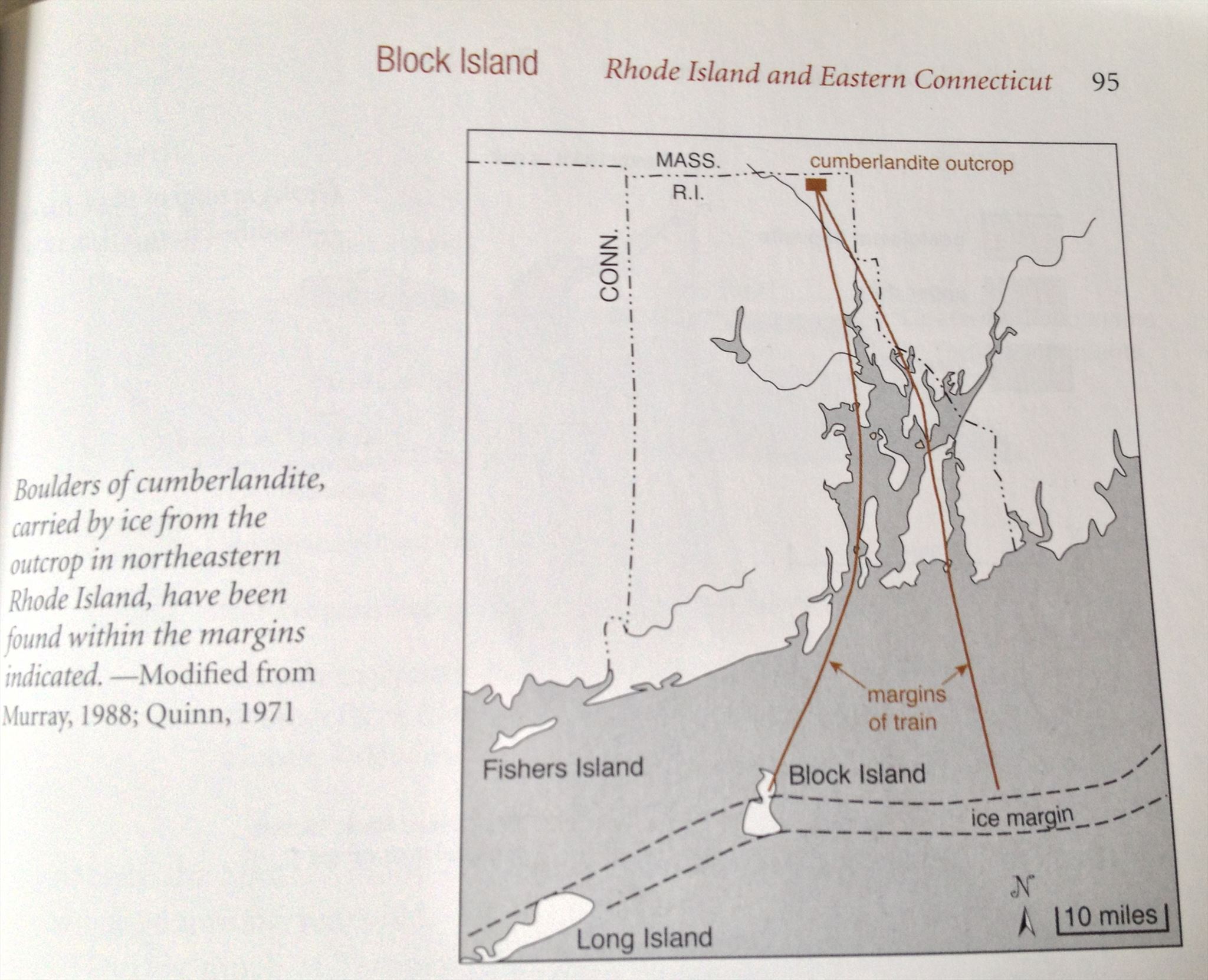Only in Rhode Island EarthCache
-
Difficulty:
-

-
Terrain:
-

Size:  (other)
(other)
Please note Use of geocaching.com services is subject to the terms and conditions
in our disclaimer.
Rhode Islanders like to claim many things as being uniquely Rhode Island or have gotten their start in good ol' Rhody... coffee milk, Johnny Cakes, fried calamari (state appetizer, really?), sideburns, and party pizza, among many others. But how about a rock unique to Rhode Island? This Earthcache will encourage you to explore geology truly unique to RI!
Some History
Cumberlandite is a rock found only in Rhode Island. Cumberlandite was first identified hundreds of years ago by Native American tribes and English colonists. The rock was originally named rhodose, as it appeared to be found only in Rhode Island. During geological surveys in the mid 1800s, however, it became apparent that the rock was quite rare even within RI. In fact, rhodose was only found within a 4-acre parcel of land on Iron Mine Hill in Cumberland, not too far from the Woonsocket border. The distinguished geologist M.E. Wadsworth described the rock in several papers and proposed renaming the stone cumberlandite in 1884.
Although the rock has not been radiometrically dated, cumberlandite is considered to be of Proterozoic age (approximately 600 MYA). At this time, the land that would become Rhode Island was part of a volcanic island arc called Avalonia. Cumberlandite formed when one of these volcanoes erupted. As the magma chamber cooled, various minerals crystallized and settled to the bottom of the chamber. Igneous rocks and minerals that form this way are called cumulates. Cumberlandite contains approximately 2 dozen different minerals!
 Earth during the late Proterozoic. The Avalon Volcanic Arc is a series of volcanoes, some of which would form rock that would one day become RI.
Earth during the late Proterozoic. The Avalon Volcanic Arc is a series of volcanoes, some of which would form rock that would one day become RI.
Cumberlandite has a characteristic appearance that distinguishes it from all other rocks. The rock is greyish black and fine grained. Three minerals are visible to the naked eye. The yellowish mineral is olivine, and the dark minerals are magnetite and ilmenite. The high percentage of magnetite in cumberlandite gives the rock magnetic properties. Hand pieces are heavy relative to their size due to the density of the minerals. Cumberlandite is often mistaken for a meteorite due to its high density and unusual appearance.
Embedded within the black groundmass of the rock are small plagioclase feldspar crystals. These crystals are grey in color within fresh, unaltered cumberlandite. As the rock oxidizes due to weathering, the grey plagioclase crystals transform into green-colored chlorites.
 An excellent example of unaltered cumberlandite. The grey crystals are plagioclase.
An excellent example of unaltered cumberlandite. The grey crystals are plagioclase.
One researcher proposed the following classification for describing cumberlandite based upon the degree of alteration:
Monotonuous cumberlandite - no white plagioclase crystals
Ornament cumberlandite - varying white plagioclase crystals
Tenuous cumberlandite - greenish plagioclase crystals
Some Interesting Facts:
Cumberlandite was used as an iron ore as early as 1703 when it was mixed with iron from the Hopkins Iron Mine in Cranston to construct cannons, tools, and weapons. Cumberlandite was used in British colonist cannons that were part of the Siege of Louisbourg of 1745, a British victory against the French in King George's War. In later years, most of the hill was quarried for road metal by the Cumberland Iron Trap Rock Company. Gravel from the site was even used for the old Narragansett Racetrack parking lot in Pawtucket.
A state resolution was approved on May 26th, 1966 proclaiming cumberlandite as the official state rock and bowenite the state mineral. This website has a scan of the legislation that was written. The cumberlandite site is currently owned by the Town of Cumberland and is a designated open space area.
Although all cumberlandite is derived only from the 4-acre parcel in Cumberland, cumberlandite rocks can be found within a "boulder train" as far south as Block Island. As glaciers passed over the cumberlandite site, portions of loose rock were picked up by the glacier and transported south. As the glacier melted, the cumberlandite, along with many other rocks, were left behind. I actually found my first piece of cumberlandite in Warwick at my "A Tropical Getaway" Earthcache.
 This diagram shows the southern, eastern, and western boundaries of where cumberlandite has been deposited due to glacial action.
This diagram shows the southern, eastern, and western boundaries of where cumberlandite has been deposited due to glacial action.
Your Assignment
Tools required: small ruler and a magnet. A magnifying lens will be helpful, but is not needed. Please email me your answers to the following questions:
1) The listed coordinates will bring you to an area that has some high quality outcrops of unaltered cumberlandite, complete with gray plagioclase crystals. You may have to search around for a bit to spot the high quality cumberlandite, but it shouldn't be too difficult. Use a ruler to measure some plagioclase crystals. Calculate the average length.
2) Travel to the included waypoint at the very top of the hill. The coordinates will put you between two large boulders. Using your magnet, determine which boulder (north or south) is cumberlandite. Remember, cumberlandite is magnetic, so a magnet should stick to it!
3) At this location, examine the cumberlandite boulder. According to the classification mentioned earlier, would you classify this cumberlandite as monotonuous, ornament, or tenuous?
4) Examining this cumberlandite boulder, do you see any evidence that cumberlandite contains high quantities of iron?
Logistics and Caution
Please park only at the included parking waypoint. You will need to walk through Elder Ballou cemetery to the listed trailhead. Please be careful as you explore the cumberlandite outcrop. It is a fairly steep slope near where you will be examining the rocks. Be mindful of your children near the edge.
Additional Hints
(No hints available.)